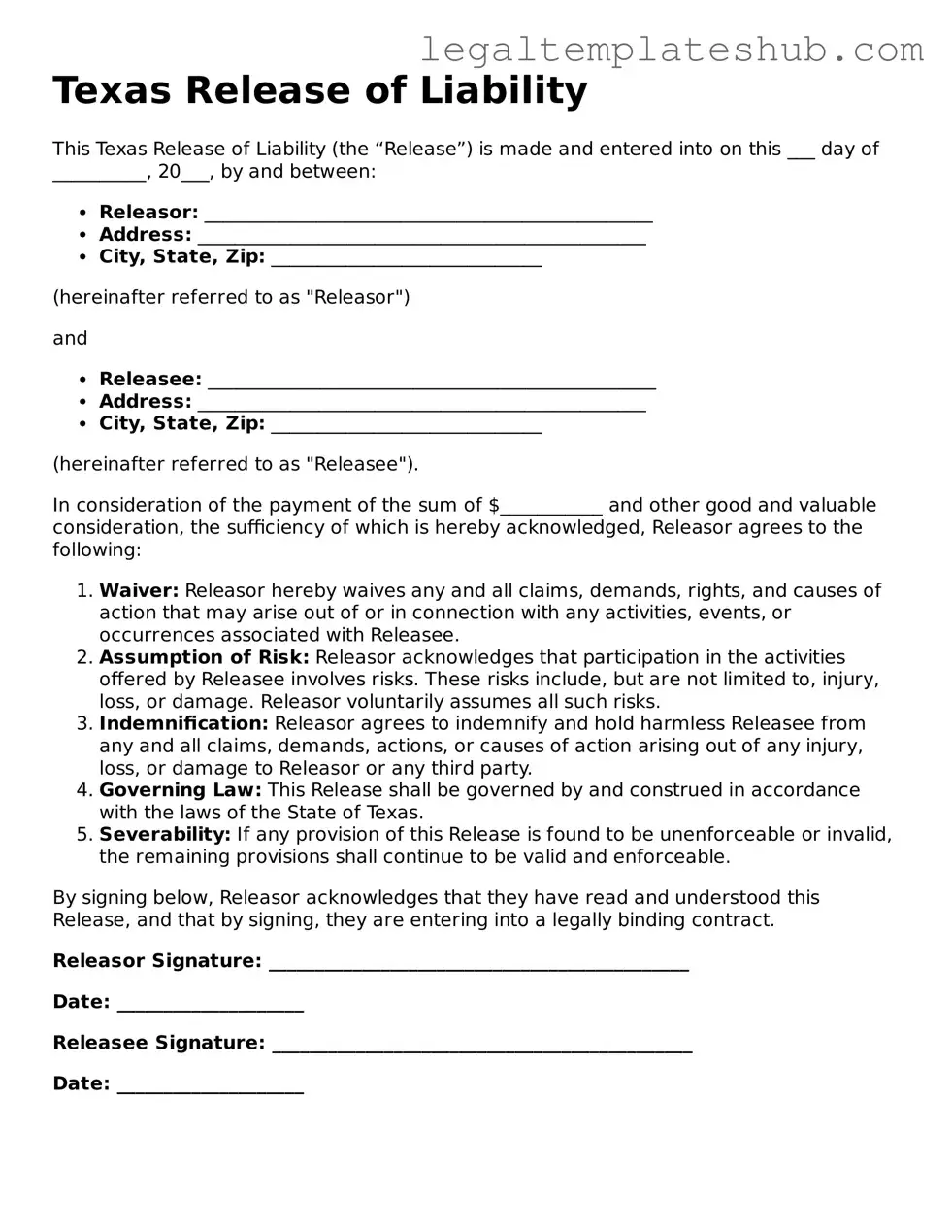Instructions on Filling in Texas Release of Liability
Filling out the Texas Release of Liability form is a straightforward process that ensures all necessary information is captured accurately. This form is essential for protecting parties involved in various activities. To make this as easy as possible, follow the steps outlined below.
- Obtain the Form: Start by downloading or printing the Texas Release of Liability form from a reputable source.
- Read the Instructions: Before filling out the form, take a moment to read any instructions provided. This will help you understand what information is needed.
- Fill in the Date: Write the date on which you are completing the form at the top section.
- Provide Your Information: Enter your full name, address, and contact information. This ensures that all parties can be reached if necessary.
- Identify the Activity: Clearly describe the activity or event for which you are releasing liability. Be specific to avoid any confusion.
- List Other Parties: If applicable, include the names of any other individuals or organizations involved in the activity.
- Sign the Form: Sign your name where indicated. This signifies your agreement to the terms outlined in the form.
- Date Your Signature: Next to your signature, write the date you signed the form.
- Witness Signature: If required, have a witness sign the form as well. This adds an extra layer of validity.
- Make Copies: After completing the form, make copies for your records and for any other parties involved.
Once you have filled out the Texas Release of Liability form, keep it in a safe place. You may need to refer to it in the future, especially if any questions arise regarding the activity. Having copies ensures everyone involved has access to the same information.
